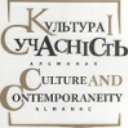ВІЗУАЛЬНИЙ ПОВОРОТ ЯК ІНТЕРПРЕТАТИВНА МОДЕЛЬ СЦЕНІЧНОГО СИНТЕЗУ МИСТЕЦТВ У КУЛЬТУРІ ХХ-ХХІ СТОЛІТТЯ
VISUAL TURN AS AN INTERPRETIVE MODEL OF STAGE SYNTHESIS OF ARTS IN THE CULTURE OF THE XX-XXI CENTURY
Author(s): Lyudmyla Vaclavivna TanskaSubject(s): Recent History (1900 till today), Sociology of Culture, History of Art
Published by: Національна академія керівних кадрів культури і мистецтв
Keywords: Culture; culture of everyday life; stage synthesis of culture of everyday life,; image; visual turn;
Summary/Abstract: Purpose of the Article. The research is related to the definition of visual and virtual dimensions of the interpretation of fashion activity as a certain communicative scene. The research methodology is to apply a retrospective analysis of visual patterns in the stage space of everyday culture. The scientific novelty of the work is that the scene is perceived by the recipient as an optical phenomenon, has a wide space in which the actor of action or event performs certain communicative acts verbally and optically. The components of this synthesis plastically, gesturally, verballydramatically and optically-visually present a whole selection of arts that form a stage synthesis. Drama is verbalized as a plastic behavior, where the action, movements determine the high space of mise-en-scène of the tank, which testifies to both the expressive arts known since ancient Greek chorea and the visual-optical patterns. Thus, in the context of visual rotation, ocular centrism is actualized - trust in the picture. Conclusions. It should be noted that there is an artistic critique of the media, producers, galleries, magazines, that is, a space of unification and adequate representation of various art phenomena is formed. It is not the artists themselves, the actors of the big stage, the producers of the great culture of everyday life who live a full life, but those who create art events, local scenes of the presentation. Visual research tends to eclecticism, which turns into a polymorphic set of discourses, which indicates that you need to find a comfort zone, certain attractions of everyday culture. Without them, the realization of a modern art product is no longer possible. Advertising management, imageology are presented in society as an indirect reality, similar to virtual technology. Imagination as a video presentation becomes a problem of interpretation, a problem of vision. Visual culture tries to rehabilitate the image and determine its meaning without a name, without a name. Such a culture without a name leads to the fact that researchers are beginning to determine only what has a name. Art history describes the relationships between objects, chronological order, movement, formal preferences, and iconographic data. Needless to say, the work of art in this case remains an individual creation, a special source of life, and a social text. The culture of everyday life in the context of visual rotation is simultaneously a text, an image, a stage artifact, a pattern, and a flash image.
Journal: Культура і сучасність
- Issue Year: 2021
- Issue No: 2
- Page Range: 63-67
- Page Count: 5
- Language: Ukrainian

